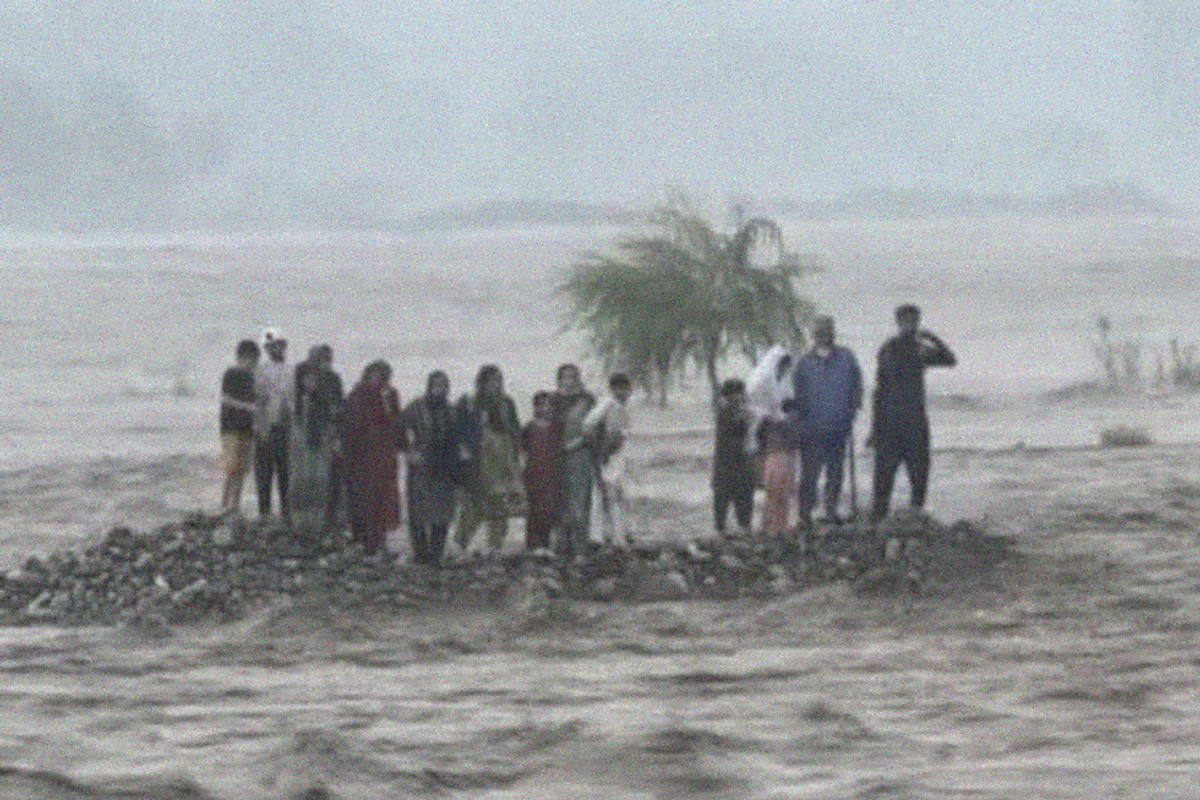Pakistan official suggests victims in Swat River tragedy may have ignored alerts
Inquiry report says tourists bypassed a security guard and entered the river via a back route
Kamran Ali
Correspondent Nukta
Kamran Ali, a seasoned journalist from Khyber Pakhtunkhwa, Pakistan, has a decade of experience covering terrorism, human rights, politics, economy, climate change, culture, and sports. With an MS in Media Studies, he has worked across print, radio, TV, and digital media, producing investigative reports and co-hosting shows that highlight critical issues.

People gather along the flooded Swat River where 18 tourists were swept away while taking photos a day earlier.
Rescue 1122
In the wake of the Swat River tragedy that claimed 12 lives, a senior government official has sparked debate by implying that the victims themselves may have contributed to the fatal outcome by disregarding existing safety advisories.
While not explicitly blaming the tourists, the official’s remarks in an inquiry report suggest that the victims ventured into a hazardous area despite repeated alerts.
The drowning incident occurred on June 27 during Pakistan’s ongoing monsoon crisis, which has unleashed flash floods and heavy rains nationwide. The victims -- a family visiting the scenic valley -- were swept away after entering Swat River when the water level appeared deceptively low.
Within minutes, the current intensified dramatically, trapping the group midstream. One by one, they were carried away by surging floodwaters, as a bystander captured the harrowing scene on video.
The footage, which quickly went viral, ignited public outrage and raised questions over the government's preparedness and rescue capabilities.
Inquiry reveals 'what happened'
In a report submitted to the inquiry committee investigating the tragedy, Abid Wazir, Commissioner of Malakand Division, outlined the sequence of events and preventative measures allegedly in place.
“A private security guard had attempted to stop the tourists from entering the river, but they managed to access the water through a back entrance,” Wazir said.
- YouTube www.youtube.com
He noted that rainfall had dramatically increased the Swat River’s flow to 77,782 cusecs at Khwazakhela, though construction activity in the riverbed had diverted water away from the surface at the incident site -- potentially creating a misleading impression of safety.
According to the report, the tourists checked into their hotel at 8:31 am and moved toward the riverside by 9:37 am. Within minutes -- by 9:45 am -- they were stranded. A distress call to Rescue 1122 was made at 9:49 am, and rescue teams “reached the spot after some time and initiated rescue operation,” the report said.
Government cites safety measures
The inquiry report further claimed that relevant departments had already been placed on high alert due to potential flooding risks. “Several weather alerts had been received from concerned institutions, and emergency duties had already been assigned to officials in anticipation of adverse conditions,” it noted. The Flood Contingency Plan 2025, according to the report, had been finalized in May.
Authorities had also launched an anti-encroachment drive along the Swat River before the floods. Section 144 -- prohibiting swimming and boating in the river—had been imposed on June 2 and extended on June 24 due to increasing flood risk.
Judicial oversight and accountability
Meanwhile, the Peshawar High Court (PHC) has ordered the completion of an independent inquiry within seven days of the incident. During Thursday’s hearing, the Chairman of the Provincial Inspection Team—also heading the inquiry committee—informed the court that the investigation was already underway.
“We were given seven days; four have already passed,” he told the bench, adding that negligence by multiple departments had been identified and was being recorded.
Chief Justice Attique Shah directed the inspection team to determine responsibility for the failures and ensure accountability. The court ordered that a comprehensive final report be submitted without delay.
Nationwide monsoon toll
The Swat tragedy occurred amid broader devastation across Pakistan caused by relentless monsoon rains. According to the National Disaster Management Authority, flash floods and torrential downpours have killed 64 people and injured 117 across the country over the past week.
Khyber Pakhtunkhwa has been the hardest hit, reporting 23 deaths, including 10 children. Punjab followed with 21 fatalities, while Sindh and Balochistan reported 15 and 5 deaths respectively. The national meteorological service has warned of continued flood risks through at least Saturday.










Comments
See what people are discussing